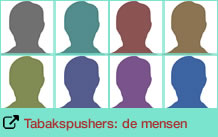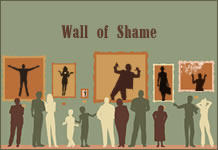Advocate General of the EU Court: Rigged cigarette can stay
08 September 2025
In an advice to the European Court, the Advocate General sees no possibility for legal entities such as Youth Smoking Prevention to require an alternative measurement method for tar, nicotine and carbon monoxide in cigarette smoke. But he does want to discuss whether the existing standard is valid.
By the web editors
Legal entities such as the Youth Smoking Prevention Foundation cannot derive any right from the Tobacco Products Directive (TPD) to ensure that cigarette emissions must be measured using a measurement method other than the ISO method prescribed in the Directive. At the same time, the discussion as to whether these ISO standards are valid, because they have never been published in the Official Journal of the European Union, has not been sufficiently conducted.
This is the conclusion of Advocate General Nicholas Emiliou of the European Court of Justice in his advice to the Court in the case of the rigged cigarette published last Thursday. In that case, Youth Smoking Prevention (YSP) has been asking since 2019 for the maximum emissions of tar, nicotine and carbon monoxide (TNCO) to be enforced with a measurement method that gives a more realistic approximation of the actual smoking behaviour of smokers. The National Institute for Public Health and the Environment (RIVM) already concluded in 2018 and again in 2023 that when using such a method (Canadian or WHO-Intense), the emissions from filter cigarettes contained much higher values of TNCO, on average a factor of 3 higher.
The European Court of Justice has been considering this case for the second time since February last year, after the Trade and Industry Appeals Tribunal (CBb) had again asked for advice from the Court of Justice through preliminary questions. Earlier, the Rotterdam District Court did the same, which ruled in favor of Youth Smoking Prevention on the basis of the judgment that the Court of Appeal then gave. An appeal against that judgment led to the case being referred to the CBb. It is remarkable that in the entire procedure, no judge has previously stated that YSP could not derive a right from the TPD to request an adjustment of the measurement method.
Two bright spots
“If the Court adopts this opinion of the Advocate General, it will of course be very disappointing for us,” responds Wanda de Kanter, chair of RPJ. “We have been working on this injustice since 2016, after the American whistleblower Jeffrey Wigand (The Insider) showed us how the industry manipulates the TNCO measurements by making holes in the filters of cigarettes. In measurements with the ISO method, which was developed by the tobacco industry itself, these holes are not covered, so that the smoke is diluted with air. Smokers cover those holes with their fingers and lips and therefore ingest many more toxins than is legally allowed. The complaint against the tobacco industry was partly based on this. The judge referred us to the government in that case, after which we submitted the enforcement request to the Dutch Food and Consumer Product Safety Authority (NVWA).”
De Kanter nevertheless sees two positive points: “So far, this whole case has ensured that there is now no one left who does not know that the TNCO measurements are being manipulated. The ministry of Health, the NVWA and the RIVM are on our side and the European Commission is also informed. We must now do everything we can to ensure that the measurement method is changed when the Tobacco Products Directive is revised. Discussion about the validity of the unpublished ISO method can be supportive in this."
‘Earlier judgment must be interpreted restrictively’
The fact that the case ended up at the European Court again is mainly because the Court’s earlier judgment of 22 February 2022 was interpreted in different ways. In his Opinion, Advocate General Emiliou distinguishes between a restrictive and a broad interpretation.
a, YSP’s lawyer, says about this: “The restrictive interpretation means that the possibility for the national court to use an alternative measurement method only applies if the tobacco manufacturers do not have access to the relevant ISO standards. The broad interpretation means that this possibility also exists if other persons, such as the Foundation, do not have access to those ISO standards. The Advocate General acknowledges that the judgment of 2022 confuses the concepts of ‘company’s’ and ‘individuals in general’ but considers that the restrictive method should be followed here for various reasons, which are explained in detail.”
‘Is the ISO standard valid?’
The Advocate General also considers that, when drafting the Tobacco Products Directive, the EU legislature weighed up the pros and cons and made conscious choices between the protection of public health, on the one hand, and the better functioning of the market for tobacco and related products, on the other.
Finally, in an extensive postscript, the Advocate General raises the question of what the legal consequences should be of the fact that a standard referred to in European legislation is not published in the Official Journal of the EU.
Sluysmans: “According to the Advocate General, such a circumstance could lead to the relevant provision – in our case: Article 4(1) of the Tobacco Products Directive in which the ISO standard is prescribed – being invalid. Since this issue has not yet been sufficiently debated in these proceedings, this should, according to the Advocate General, lead to the reopening of the oral procedure. Of course, it is not possible to predict in advance what the Court of Appeal will do with this suggestion, let alone what the outcome of this assessment will be. In the event that Article 4(1) is considered invalid for the aforementioned reason, this may of course have significant consequences for the further continuation of these proceedings.”
tags: lawsuit | ISO-methode | Canadian Intense-methode | tnco | European Court | rigged cigarette | Youth Smoking Prevention









 Stichting Rookpreventie Jeugd is geregistreerd als Algemeen Nut Beogende Instelling (RSIN: 820635315 | KvK: 34333760).
Stichting Rookpreventie Jeugd is geregistreerd als Algemeen Nut Beogende Instelling (RSIN: 820635315 | KvK: 34333760).